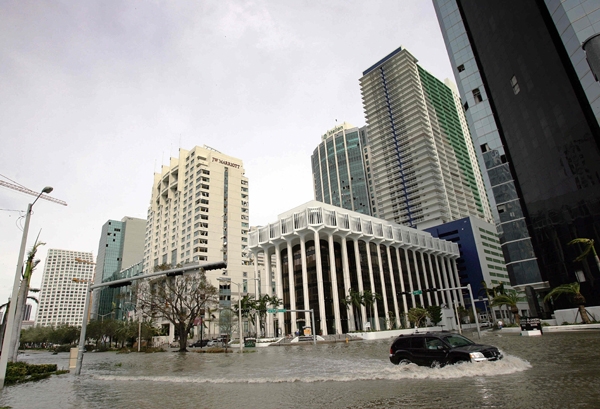
Miami after Hurricane Wilma in 2005. Roberto Schmidt/AFP/Getty Images
submitted by Albert Gomez
By century's end, rising sea levels will turn the nation's urban fantasyland into an American Atlantis. But long before the city is completely underwater, chaos will begin
rollingstone.com - by Jeff Goodell - June 20, 2013
When the water receded after Hurricane Milo of 2030, there was a foot of sand covering the famous bow-tie floor in the lobby of the Fontainebleau hotel in Miami Beach. A dead manatee floated in the pool where Elvis had once swum. Most of the damage occurred not from the hurricane's 175-mph winds, but from the 24-foot storm surge that overwhelmed the low-lying city.
(READ COMPLETE ARTICLE)
Recent Comments